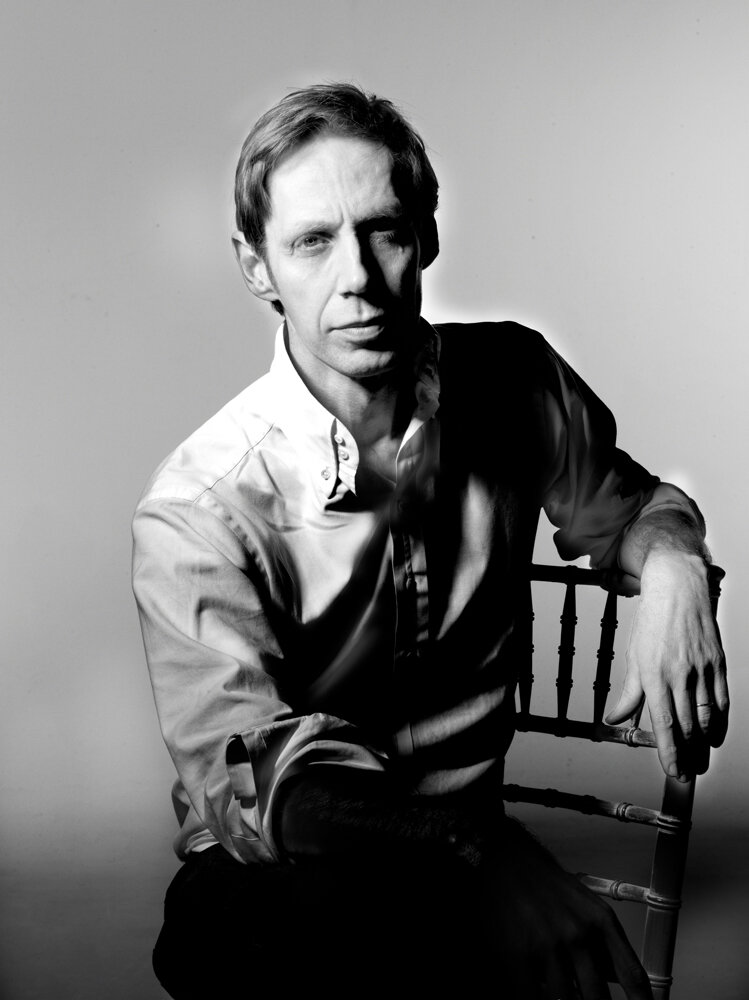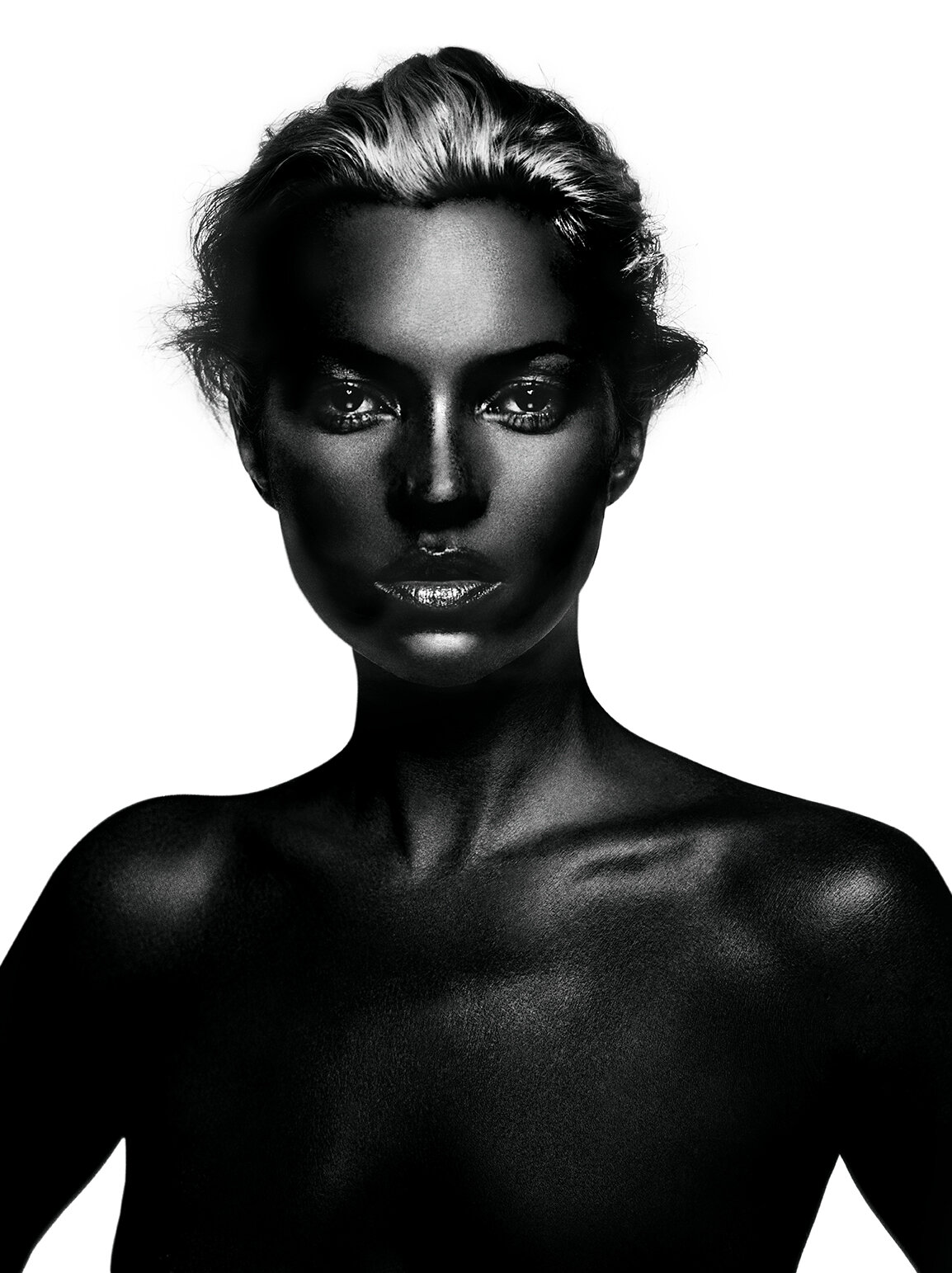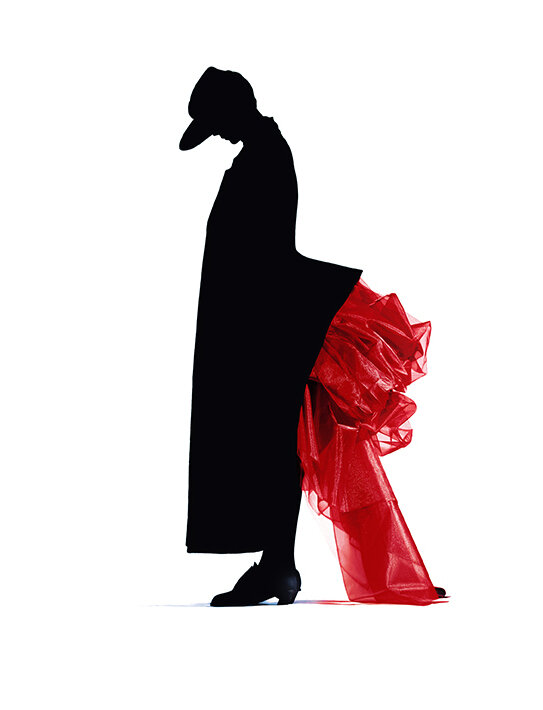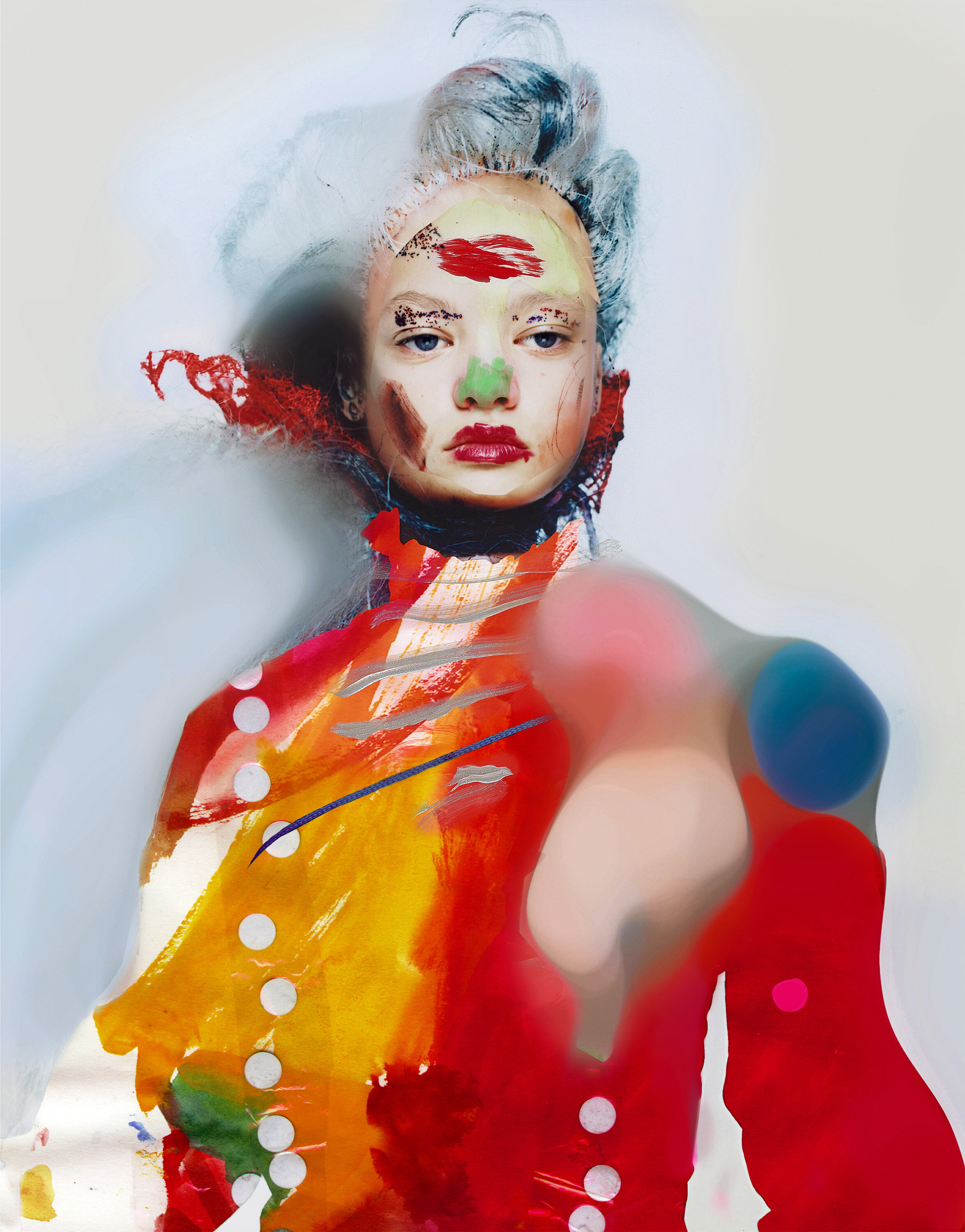Nick Knight OBE
ODDA - Hannah Beach (2018)




His reputation as a revolutionary force in fashion photography precedes him. Nick Knight’s approach to his craft extends far beyond the camera lens; his work has pushed boundaries and challenged convention for the past 35 years. Te stories of brands such as Alexander McQueen, Yohji Yamamoto and Christian Dior have all been told through his images; images that exist outside the realms of the real world – but that of the fashion universe. Knight’s SHOWstudio has now become one of the most influential digital platforms for fashion film, photography and industry led online discussion. Nick Knight is not a photographer; he is a rule breaker, an uncompromising creative force and above all, an incredible image-maker.
Mr. Knight, why is it important for you to create images?
Because it’s important to speak, it’s important to communicate, it’s important to think about why we are here on this planet. Creating images is just about having a conversation, it’s just about speaking and it’s the language that I speak in. It’s a way of saying: look! I think this, I find this interesting, I find this annoying, this is exciting, this is awful, this makes me upset or this makes me happy; so it’s just a way of talking
You established your career 35 years ago and the industry has changed phenomenally in that time - largely due to your approach to photography. Could you tell us about the world you started in and the place you find yourself in today?
It’s totally different. I’ve said this before, but I don’t think I do photography anymore. It’s my firm belief that photography was a very distinct medium, defined by a very distinct set of parameters which links everyone from Richard Avedon to Eugène Atget, from Mapplethorpe to Muybridge. All those people were photographers and the medium they practiced was very clearly defined by a set of very clear parameters; so you could describe it to anybody and they would understand what you were doing. What I do now, and in fact what most people do now, is outside of those parameters. The way I work and the platforms upon which I work and the images which I produce aren't within those parameters at all. I can take a picture with my iPhone and very quickly I can change the background, or I can make it into an animation. I can put sound to it and broadcast it across the globe at the press of a button. That’s got nothing to do with photography, its outside of those parameters and I think that’s really happened since the mid-nineties. I’ve been calling it image-making for the last 20 years because I think that’s the closest thing I can come to what I do – it’s creating images. An image can be a moving image or it can be a still image; but it’s an image and I think that feels closest to describing what I do. Now, if I was to take a picture from where I'm standing of my garden, which would look very beautiful in the sunlight, I could press a button and half a million people would see that instantly. That’s very different from going out with a camera and taking a picture, developing the picture in the darkroom, printing it and getting it to a publication. Then, the publication would decide whether they would publish it or not, they would then change it, they'd find a use for it and that takes months; photography was never an instant global communication. None of the magazines that we worked for ever had that reach. The biggest difference is that I can now publish a picture and it stands on its own merit, so if people like it, they like it. I’m not having that picture published to make money for somebody else. Before, if I’d taken a picture and if a magazine decided to publish it, it was because it would make the magazine better and therefore would sell more copies; or if you were a gallery and you decided to put it on the wall, it’s because you thought you could sell it and make some money from it. All the creative arts were based on making a third party money and that’s how they were allowed to exist. That goes right back in time to when the Medici’s started the patronage of the arts, which was, "Yes, you can paint my Sistine Chapel, but you’re going to have to paint what I want and it’s going to make me a bigger person in society" - so it’s at somebody else’s profit. That’s a fundamental change that I don’t think people have grasped yet; now the work is made purely for the love of the work and that’s what SHOWstudio was based on; it wasn't based on making money, it was based on how to create work that we love, that people will want to see. There’s still no advertising on SHOWStudio – it’s been a non-commercial platform for nearly 20 years and has just existed to allow work to be created free from that commercial restraint. I didn't want to make all of my work just to sell somebody else’s product; I’m quite happy to do that, but it’s not everything I wanted to do.
Your images carry a distinctive Nick Knight signature – in some way, is all your work part of the same story?
Yes, I am who I am, I can’t be somebody else. So, I can only see the things I see and I only like the things I like. People talk a lot about style within photographs but it’s innate, it’s something you have no real control over. It’s like whether you like chocolate or you don’t like chocolate, whether you like one thing or another – it’s natural. It’s the same thing when I'm creating an image, I find I'm looking for things that I like, I’m looking for things that please me and I will naturally go towards those. So, you tend to work by responding to the same sorts of impulses and the same sorts of desires because that’s who you are; so it’s not a conscious decision to have a particular style or signature, it’s because you are the same person. You're always going to like the same type of stuff and be attracted by the same sorts of things; tastes change and we change as people when we grow older and our lives change around us, so you find new things out. But, at the core, you are the same person throughout your life. So, naturally, your work tends to come from the same mind, same voice and same heart.
What does your work aim to question?
I much prefer asking questions than I do providing answers. I think it’s more important to ask questions in a way. I think it’s important to make people think; just giving them an answer isn't necessarily the best way to make them think. So, I think a piece of work that’s thought provoking, that makes people question why they do certain things or why they think a certain way or why they like certain things – I think it’s really important. I’ve always believed that you should show the process of how you create work, it shouldn't be this mystery to hide away from, I think it’s important to show that you fail. Photographers and image-makers are often very frightened of failure because none of us really know how to do this, it’s very hard to know how to get better at making images or taking photographs. None of us are quite sure how to repeat what we perceive as success from the past. Overtime, you’re presented with a new shoot to do, it’s always terrifying, it’s always tricky to work out what you’re going to do. That’s why you should never really plan it too much, because you’re never going to know what it’s like to stand in front of that person until you’re there. You need to have images which are fresh and new and about the moment they were taken, not about some kind of plan or sketch you came up with beforehand. It’s important to realise that way of working that often you fail; the first image you take is usually not very good. It’s important to fail as failure and accidents show you things that you couldn't have previously imagined and that’s often how I work. By going through stages of accidents, failure and trying things out, it’s like play and the spirit of playing which is often lost in adult life; it’s a spontaneous emotional reaction to events around you, rather than sort of coded plans. Which is why when I’m doing films I don’t story board - much to the annoyance of my clients.
Experimentation defines your career as an image maker, from the live broadcast of sleeping models (Sleep) in 2001 to The Sound of Clothes in 2005; where do you find your inspiration?
Well, inspiration comes from your life. Everything is inspiring if you choose to see it that way, it really just depends on your own mood. I mean, absolutely everything is inspiring, if you want to see it as inspiring, it is inspiring. Everybody has beauty in them, you just have to see it and want to see it. It’s more a case of when you are inspired, what happens inside of you to make you inspired, but it isn't external events, it’s more internal events that inspire you. I can walk down the street one day feeling totally in love with the world and be totally inspired by every centimetre of my journey; but sometimes you walk down the street and you don’t feel anything and you’re not really there. Everything from the light on a cobweb, to the colour of a leaf or the wind in a boy’s hair - I mean everything - the sound a car makes, all of it can seem exciting and inspiring if you’re in the right frame of mind.
LIVE seems to play a key role in a lot of your work, from the 24-hour fashion shoot for YSL or 23-course Heston Blumenthal Banquet - what is it about real time that appeals you and your craft?
It’s the spontaneity, it’s the fact that people can see you fail, allowing people to see the reality of you creating is important. Tere is a thrill to know you’ve got a million people watching you doing what you’re doing. I mean, it’s nerve-wracking, but we’re all performers in a certain sense, especially people who work in the fashion industry - I do a physical performance when I’m working and taking photographs and I'm aware of that and I don’t think that should be dismissed. Te physicality of our jobs is important and for people to see what really goes on, I’m very happy to be completely open about what I do and have cameras in every part of it, because every part of it is important. Te whole ‘live’ process becomes a way of being open and being more truthful with the imagery. I don’t like the situation where you are presenting your work, retouched, on the cover of a magazine, 3 months after they were taken and nobody has any interaction with them. It’s like when you go around a museum and you see a photograph on the wall and you think, "I wonder what they were thinking" and you have no connection with it, you’re just left there guessing. I don’t think that’s a good way of understanding what a picture is about. I don’t like the sort of arrogant position that a lot of artists present in, of unexplained sculpture, painting or photograph; just speak clearly to me.
In 2009, SHOWstudio ‘live streamed,’ McQueen’s S/S '10 show long before it became the norm. What prompted you to take this step?
The motivation was to do something I thought everyone should see. I used to go to the fashion shows a lot, especially to Alexander McQueen or John Galliano’s, as they were friends and clients of mine and the shows were amazing. But you think to yourself, there are 300 people in this room and about 3 million that I know would like to see this - so why are we not showing it to everyone that wants to see it? Why is it just this room of slightly bored looking fashion journalists and buyers? The first fashion show I ever went to was Yohji Yamamoto in Paris in about ’86 and remember thinking the front row looked really bored and I was thinking, "This is amazing!" It was so beautiful, it was like a piece of art. Knowing there were about 300 art students outside who wanted to so badly to see this, but couldn't get in, I just thought why can’t we open the doors? Then, the Internet came along which was a good way of opening the doors. It was a very exciting feeling to allow people to see this and we started with Plato’s Atlantis and that, overnight, changed the fashion industry. Now, 8 years later, nearly 80% of the shows are broadcast live, so it’s all totally changed how fashion is shown. Designers are now looking at different ways of showing their collections and there’s a very different approach to when it started with Plato’s Atlantis.
SHOWstudio was founded in 2000 and has revolutionized the way in which we view fashion and its creators - how do you envision its continuation to go against the grain and remain on the cutting edge?
The grain’s really changing; what we’ve seen, not entirely through SHOWstudio, is a revolution in fashion. The way it’s been articulated for the past 100 years is no longer fit for purpose. You can’t keep on showing so many collections, you can’t keep asking designers to produce so much stuff, you can’t keep it all behind closed doors and you can’t just show through the magazines. I think it needs to change, the system doesn't feel contemporary, I don’t think it’s a good way of showing clothes. I love fashion magazines but we can’t fool ourselves - the best way to show clothes, which was designed to be seen in movement, is best shown as a 2D image? It can’t possibly be true, all designers create garments to be seen in movement - therefore the best way to show them must be as fashion film, which is what SHOWstudio has been about. It’s a bit like going from the silent movies to the movies we know now - it’s a big step but it makes sense. Magazines and the 2D image still have a purpose, but fashion film is very important and is still a young medium. If you look back at the last 20 years in the history of fashion photography, it was pretty different to the fashion photography we know now. But it took 50-60 years to establish itself, it wasn't until you get to the Bert Sterns, Irving Penns and the great photographers from the 1960’s that you start to see something that really looks like contemporary fashion photography. And I think you’re seeing the same kind of invention in fashion film; I think you’re beginning to see this medium becoming stronger and stronger and more popular. It’s finding its parameters and way of talking. At the moment, we don’t really know how long a fashion film is – is it a 12 or a 20-minute film? Or is it just an animated GIF? The idea behind a fashion film is just to see clothes in movement - so maybe a GIF does that fine. I just did a film with Gareth Pugh for his last collection and it was 17 minutes long and it was shown at the IMAX cinema. We’re all still questioning what a fashion film is. I think we’ve started a revolution, but the dust hasn't settled yet. At SHOWstudio, one of the most exciting things we’re looking at right now is AI, which is a totally different rationale to creating images and it’s something that is going to be in every part of our lives soon – those kinds of things are very exciting. It’s a huge new way of looking at the world and a total revolution in ways of communicating. There is a fundamental change going on; we have a very different landscape in front of us, one that is very interactive, immediate and global and will bring in all our different senses by combining science and the arts. We have to creatively rise to this challenge and be in charge of developing it or else it will be military and the porn industry.
